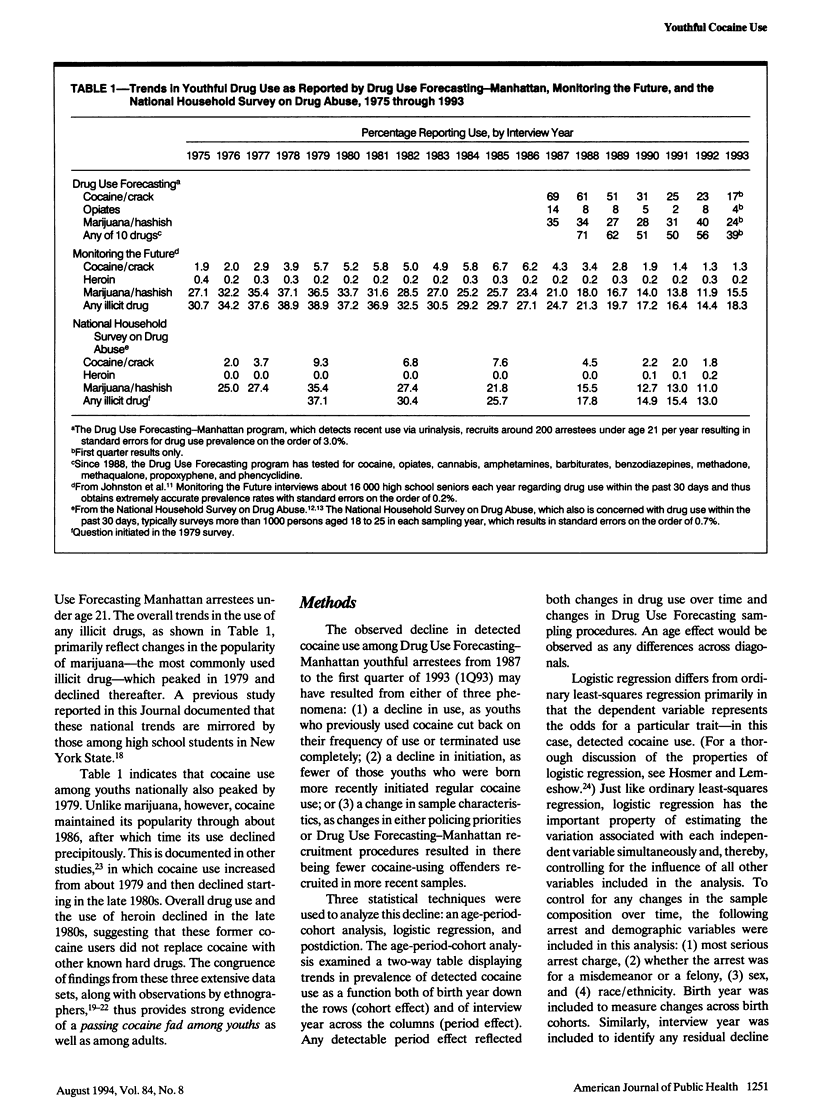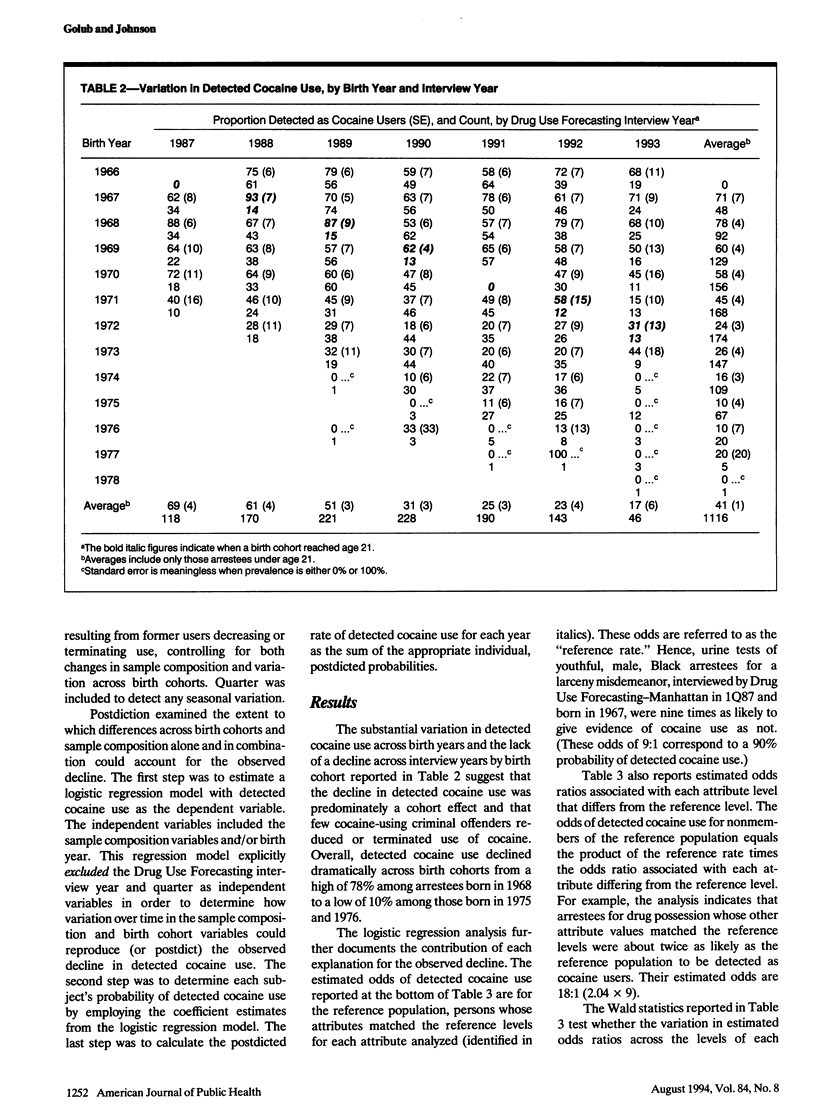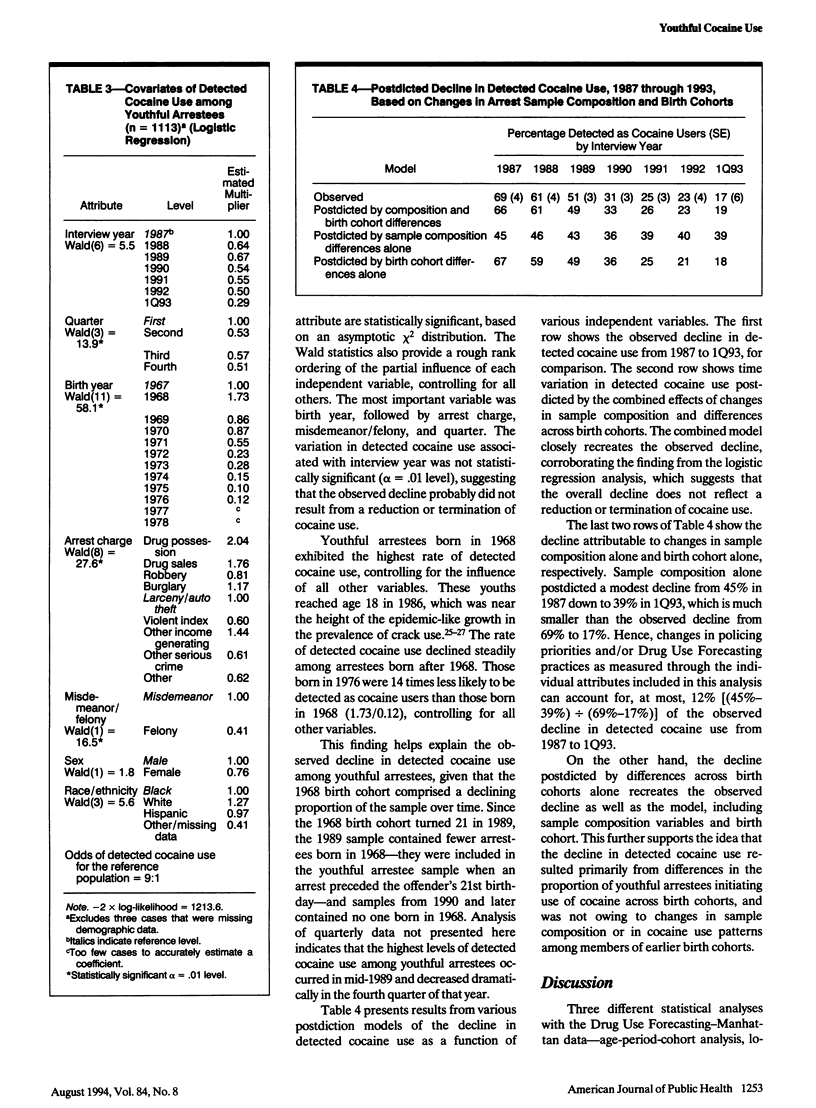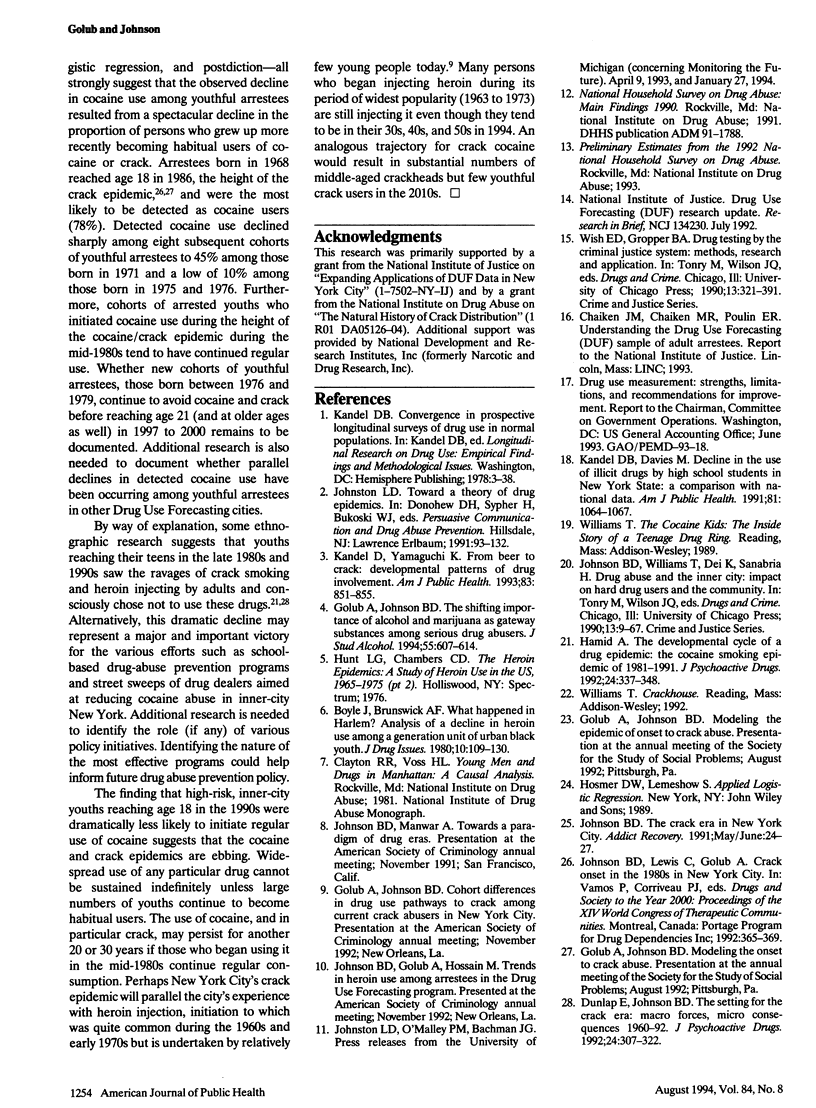Abstract
OBJECTIVES. Cocaine use among youths as measured by several annual surveys was most popular from about 1979 to 1986, after which it declined. This study carefully examines the nature of the decline by focusing on microdata for youthful arrestees in Manhattan. METHODS. Multiple statistical analyses examine whether the decline in cocaine use detected by urinalysis is attributable to fewer arrested youths born more recently having become regular users (cohort effect), to regular users decreasing their consumption (period effect), or to changes in arrest or sampling priorities (artifact). RESULTS. All analyses suggest that the dramatic decline in detected cocaine use among arrestees--from 69% in 1987 to 17% in 1993--was a cohort effect. Detected cocaine use, which was highest (78%) among arrestees reaching 18 in 1986 at the height of the crack epidemic in New York City, subsequently declined to a low of 10% among arrestees reaching 18 in 1993. DISCUSSION. These findings suggests that the epidemic in use of cocaine and crack entered a decline in the late 1980s. However, widespread use of these drugs will probably continue to prevail as an aging population with established habits persists in its use.
Full text
PDF




Selected References
These references are in PubMed. This may not be the complete list of references from this article.
- Dunlap E., Johnson B. D. The setting for the crack era: macro forces, micro consequences (1960-1992). J Psychoactive Drugs. 1992 Oct-Dec;24(4):307–321. doi: 10.1080/02791072.1992.10471656. [DOI] [PMC free article] [PubMed] [Google Scholar]
- Golub A., Johnson B. D. The shifting importance of alcohol and marijuana as gateway substances among serious drug abusers. J Stud Alcohol. 1994 Sep;55(5):607–614. doi: 10.15288/jsa.1994.55.607. [DOI] [PubMed] [Google Scholar]
- Hamid A. The developmental cycle of a drug epidemic: the cocaine smoking epidemic of 1981-1991. J Psychoactive Drugs. 1992 Oct-Dec;24(4):337–348. doi: 10.1080/02791072.1992.10471658. [DOI] [PubMed] [Google Scholar]
- Kandel D. B., Davies M. Decline in the use of illicit drugs by high school students in New York State: a comparison with national data. Am J Public Health. 1991 Aug;81(8):1064–1067. doi: 10.2105/ajph.81.8.1064. [DOI] [PMC free article] [PubMed] [Google Scholar]
- Kandel D., Yamaguchi K. From beer to crack: developmental patterns of drug involvement. Am J Public Health. 1993 Jun;83(6):851–855. doi: 10.2105/ajph.83.6.851. [DOI] [PMC free article] [PubMed] [Google Scholar]


